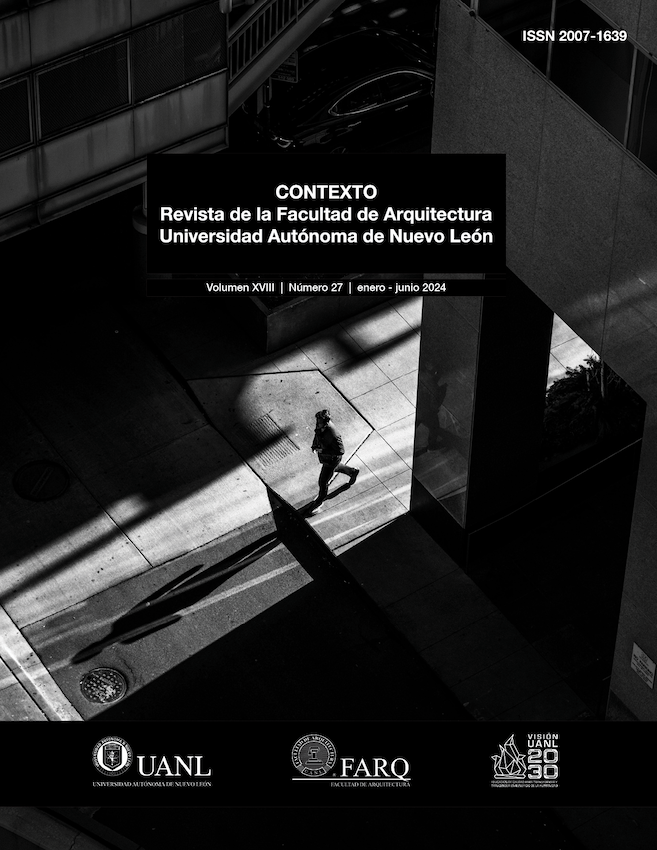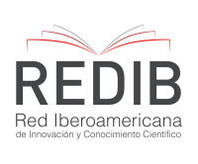perception of domestic architecture in times of confinement in Hermosillo, Sonora, Mexico
DOI:
https://doi.org/10.29105/contexto17.27-423Keywords:
Domestic architecture, confinement, perception.Abstract
The study presents the result of an investigation whose purpose was to determine if domestic architecture positively or negatively influences user behavior in times of confinement due to covid-19 based on an exploratory analysis. In such a situation, there is the possibility that the space inhabited to comply with a confinement was decisive to benefit or harm the health of the user regardless of whether or not they were infected and, where appropriate, identify if they had relief and benefit with the different characteristics of the space. to confine The methodology proposes a non-probabilistic sampling by applying a questionnaire in eight neighborhoods of different social strata in the city, for which the information was collected and its variables were defined, which were integrated into a database for statistical analysis. The main results revealed that the influence of architectural variables on the physical and psychological well-being of the inhabitan is altered by the confinement situation.
Downloads
References
Acedo, R. (2018). Percepción de las condiciones de seguridad de los trabajadores de la construcción en la ciudad de Hermosillo. [Tesis de maestría, Universidad de Sonora].
Akinyode, B. F., (2020). Residents’ risk perceptions on Covid-19 and the impacts of social distancing in Nigeria. Urbana, XXI, 14-3, https://doi.org/10.47785/urbana.2.2020 DOI: https://doi.org/10.47785/urbana.2.2020
Beldarraín, E. (2020). La información científica confiable y la COVID- 19. Revista Cubana de Información en Ciencias de la Salud, 31 (3), 1-6.
https://www.redalyc.org/articulo.oa?id=377665638004.
Cantó-Milá, N., González, I., Martínez, R., Moncunill, M., y Seebach, S. (2021). Distanciamiento social y COVID-19. Distancias y proximidades desde una perspectiva relacional. Revista de Estudios Sociales 78, 75-92. https://doi.org/10.7440/res78.2021.05 DOI: https://doi.org/10.7440/res78.2021.05
Creswell, J. (2009). Diseño de Investigación; Métodos Cualitativo, Cuantitativo y Mixto. (3ra ed.). Nebraska: Sage.
Escalante Ley, Ivan (2018). Factores que influyen en la motivación del personal obrero en la construcción de edificaciones, en Hermosillo, Sonora. [Tesis de maestría, Universidad de Sonora].
Gobierno del Estado de Sonora (4 de junio de 2021). Coronavirus COVID-19. Disponible en: https://www.sonora.gob.mx/coronavirus/quedate-en-casa.html
Gómez, N., del Rosario, K. (2014). Re-densificación con base a la vivienda vertical: una apuesta por la calidad de vida. Revista Legado de Arquitectura y Diseño, 16, 81-93, https://www.redalyc.org/articulo.oa?id=4779/477947304006
Hernández, G., y Velásquez, S. (2014). Vivienda y calidad de vida. Medición del hábitat social en el México occidental. Revista Bitácora Urbano Territorial, 24 (1),1-36. http://www.redalyc.org/articulo.oa?id=74830875016
INEGI, Instituto Nacional de Estadistica, Geografia e Informática. (2021). Censo de poblacion y vivienda. https://www.inegi.org.mx/
Lotito, F. (2009). Arquitectura psicología espacio e individuo. Revista AUS, 6, 12-17, https://www.redalyc.org/articulo.oa?id=281723479003. DOI: https://doi.org/10.4206/aus.2009.n6-03
Mooi & Sarstedt, (2011). A Concise Guide to Market Research. The process, Data and Methods Using IBM SPSS Statistics, Springer, https://doi.org/10.1007/978-3-642-12541-6. DOI: https://doi.org/10.1007/978-3-642-12541-6
Ojeda, A., Escalante, I., Quintana, P., Ramos, M. (2019). Percepciones en la motivación de los trabajadores de la Construcción en Hermosillo, Sonora. Urbana, XX, 54-74.
Ordóñez, G. (2020). Tijuana ante el confinamiento social impuesto por la COVID 19: habitabilidad de las viviendas, entorno urbano y condiciones económicas de los hogares. Espiral Estudios sobre Estado y Sociedad, Vol. XXVII, 78, 303-349, DOI: https://doi.org/10.32870/eees.v28i78-79.7209
https://www.redalyc.org/articulo.oa?id=13866195007
Orozco-Gómez, I., Guzmán-López, S. (2015). Reflexiones sobre la habitabilidad de la vivienda social. El Área Metropolitana Centro Occidente. Colombia. Revista Bitácora Urbano Territorial, 25 (1), 27-35, https//doi.org/10.15446/bitácora.v1n25.40257 DOI: https://doi.org/10.15446/bitacora.v1n25.40257
Pérez, C. (2009). Técnicas de análisis de datos con SPSS15. Universidad complutense de Madrid,
España: Pearson Prentice Hall.
Ramos, S. A. (2021). Satisfacción de habitabilidad durante el confinamiento por Covid-19. Estudio
comparativo de dos tipologías de vivienda en Argentina. Contexto, XV, 23, 28-44.
Salama, Ashraf M. (2020). Coronavirus questions that will not go away: interrogating urban and socio-spatial implications of COVID-19 measures [version 1; peer review: 3 approved]. Revista Emerald Open Research, 2(14), 1-17.
https://doi.org/10.35241/emeraldopenres.13561.1 DOI: https://doi.org/10.35241/emeraldopenres.13561.1
Salud, S. d. (18 Enero 2022). Gobierno de México.
Recuperado de https://www.gob.mx/salud/documentos/datos-abiertos-152127.
SMN (2022). Servicio Meteorológico Nacional. Recuperado de:
https://smn.conagua.gob.mx/es/informacion-climatologica-por-estado?estado=son
Torres, M., y Paz, K. (2006). Tamaño de una muestra para una investigación de mercado. Boletín electrónico de la Facultad de Ingeniería, 02, 1-13.
Vargas, L. (1994). Sobre el concepto de percepción. Revista Alteridades, 4 (8), 47-53 https://www.redalyc.org/articulo.oa?id=74711353004
Visauta, B., & Martori, J. (2003). Análisis estadístico con SPSS. Estadística multivariante.
España: McGraw-Hill./Interamericana.
Ziccardi, A. y Figueroa, D. (2021). Ciudad de México: condiciones habitacionales y distanciamiento social impuesto, Covid-19. Revista Mexicana de Sociología, 83, 31-60,http://revistamexicanadesociologia.unam.mx/index.php/rms/article/view/60068/53129
Ziccardi, A. et al. (2020). Condiciones de habitabilidad de las viviendas y del entorno urbano ante el aislamiento social impuesto por Covid 19. https://www.iis.unam.mx/wp-content/uploads/2020/05/CONDICIONES-DE HABITABILIDAD.pdf.
Downloads
Published
How to Cite
Issue
Section
License
Copyright (c) 2024 ARTURO OJEDA DE LA CRUZ, David Dominguez FRanco, Israel Miranda Pasos

This work is licensed under a Creative Commons Attribution-NonCommercial 4.0 International License.
The authors who publish in this journal accept the following conditions:
1. The authors keep the copyright and give the journal the right of the first publication, with their content registered under the Creative Commons License, which lets third parties to use the published material as long as they mention the authors and the first publication from the journal.
2. The authors can make other independent and additional contractual agreements for the non-exclusive distribution of the version of the article published in the journal (for example an institutional repository or a book) provided that they explicitly mention that the content was first published in CONTEXTO. Revista de la Facultad de Arquitectura de la Universidad Autónoma de Nuevo León..














.png)





